Hubba hubba Hope. The Hope HB.916 is one of the nicest looking bikes we’ve seen for quite some time. But does the 160/170mm enduro bike live up to its aesthetic promise?
- Brand: Hope
- Product: HB.916
- Price: Complete bikes from £6995.00, framesets inc. shock, headset & BB from £3,595, Complete minus drivetrain from £3,595
- From: Hope Tech
- Review by: Benji for a week
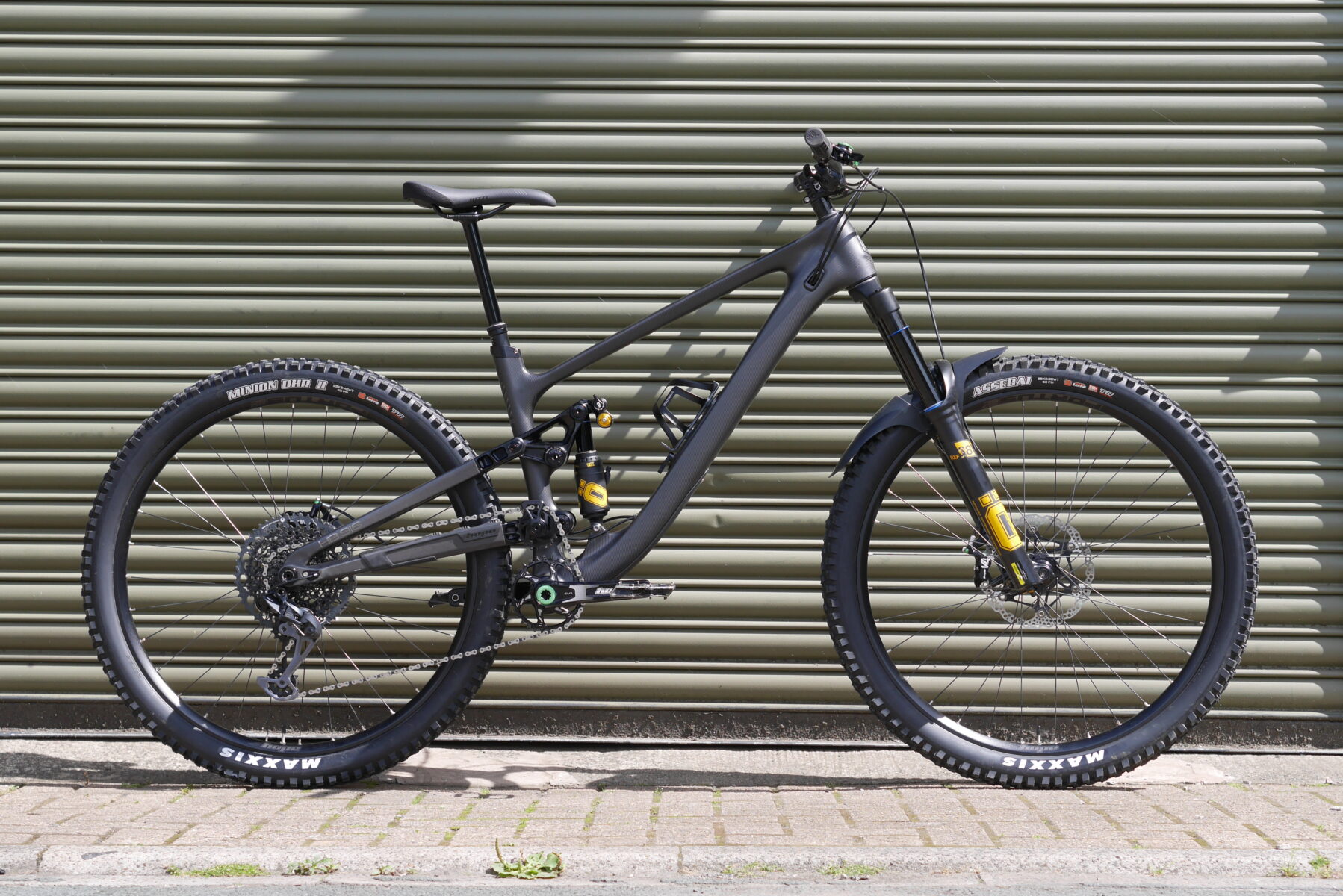
Three things I loved
- Perfect geometry
- Rides light
- That weave
Three things I’d change
- Not a fan of DMR Deathgrips
- Cheaper is always nice
- Um.
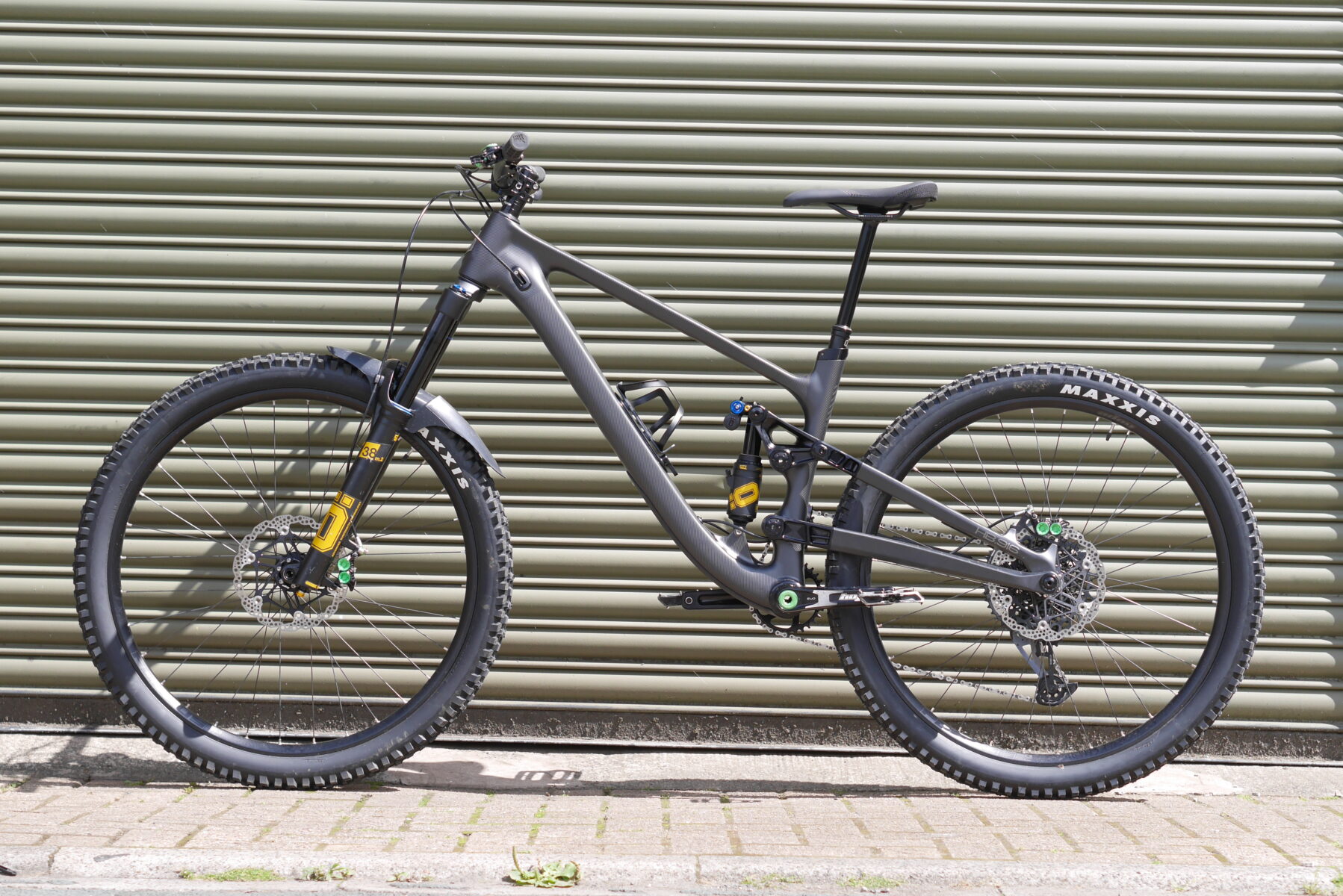
The HB.916 is very much not a new HB.160 (their previous enduro bike). Everything about it is different. Well apart from what it’s made from (carbon) and where it’s made (Barnoldswick, Lancashire). Actually, the rear travel is the same (160mm) so maybe I’m exaggerating the HB.916’s newness for journalistic effect. Surely not.
The Hope HB.916 is like a complete new project. High pivot with idler and all. Well, high-ish pivot. The idler is not that far above the chainring, certainly compared to other ostensibly similar designs from Deviate, Commencal, GT, Norco et al.
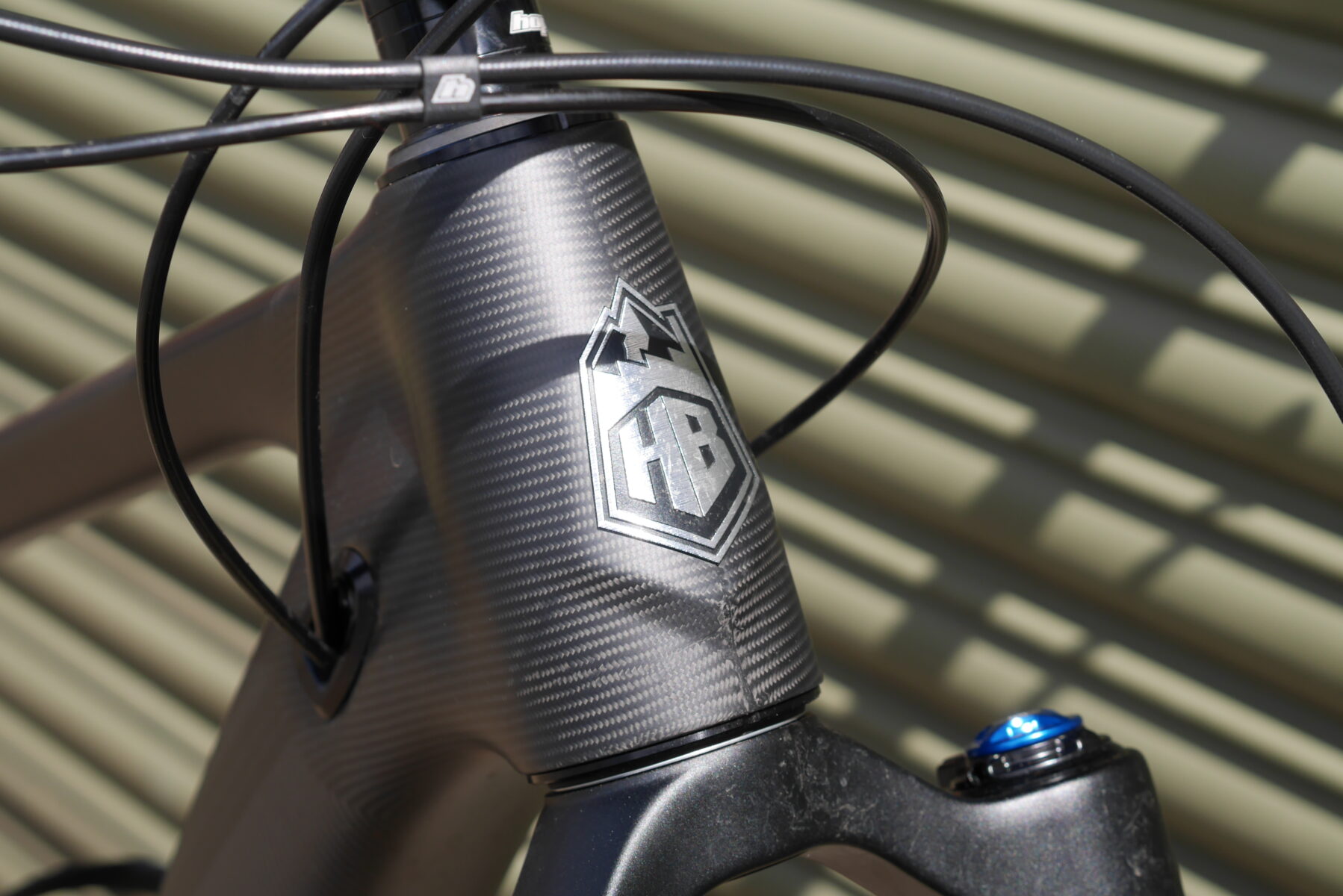
The looks
I don’t often like to spend time writing about the manufacturing of a bicycle. I usually just prefer to jump straight into how it rides. But clearly, with the made-in-UK weave-tastic CNC-fest Hope HB.916, how the bike is made a big part of the whole thing.
Essentially, it is stunningly well put together. Nothing on this bike is lightly fudged or bodged or sticking plastered. It looks amazing. Crisp yet smooth. It feels like the very definition of precision engineering. It’s so well constructed that it makes you look at the price tag, look back over the bike, and go “yeah, fair enough really”.
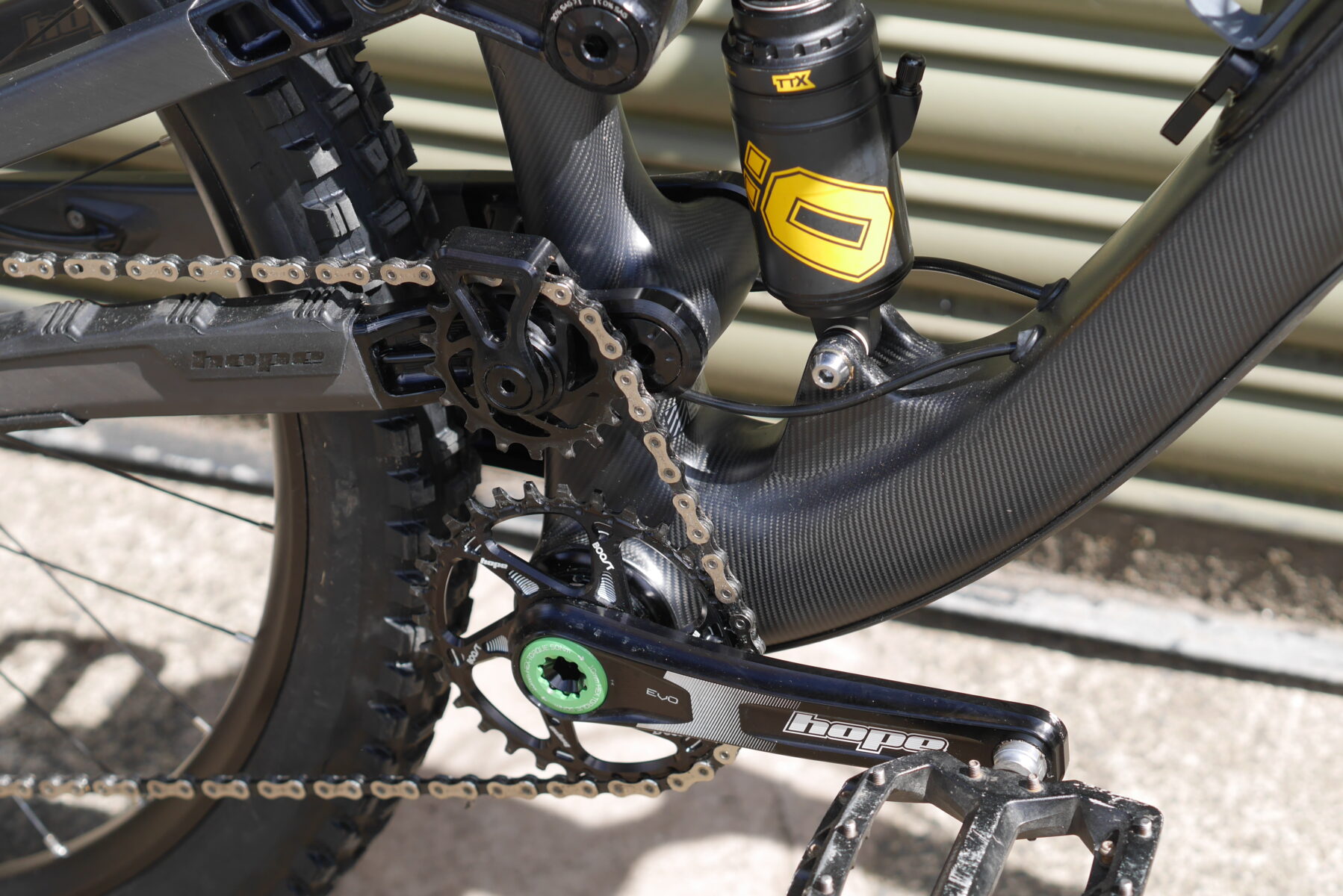
I like to think I’m not that bothered about bike aesthetics. And I don’t think I am when it matters. It’s not that the HB.916 is a ‘pretty’ or ‘cool looking’ bike (although it is very definitely both), it’s that it exudes something well thought about, well designed and well put together. No compromises have been made.
The front triangle is one piece carbon fibre and like all the carbon parts on the bike, proudly displays its weave top layer. Often, carbon with a visible weave looks hideously naff and a bit nineties. Somehow the weave finish on the HB.916 looks great.
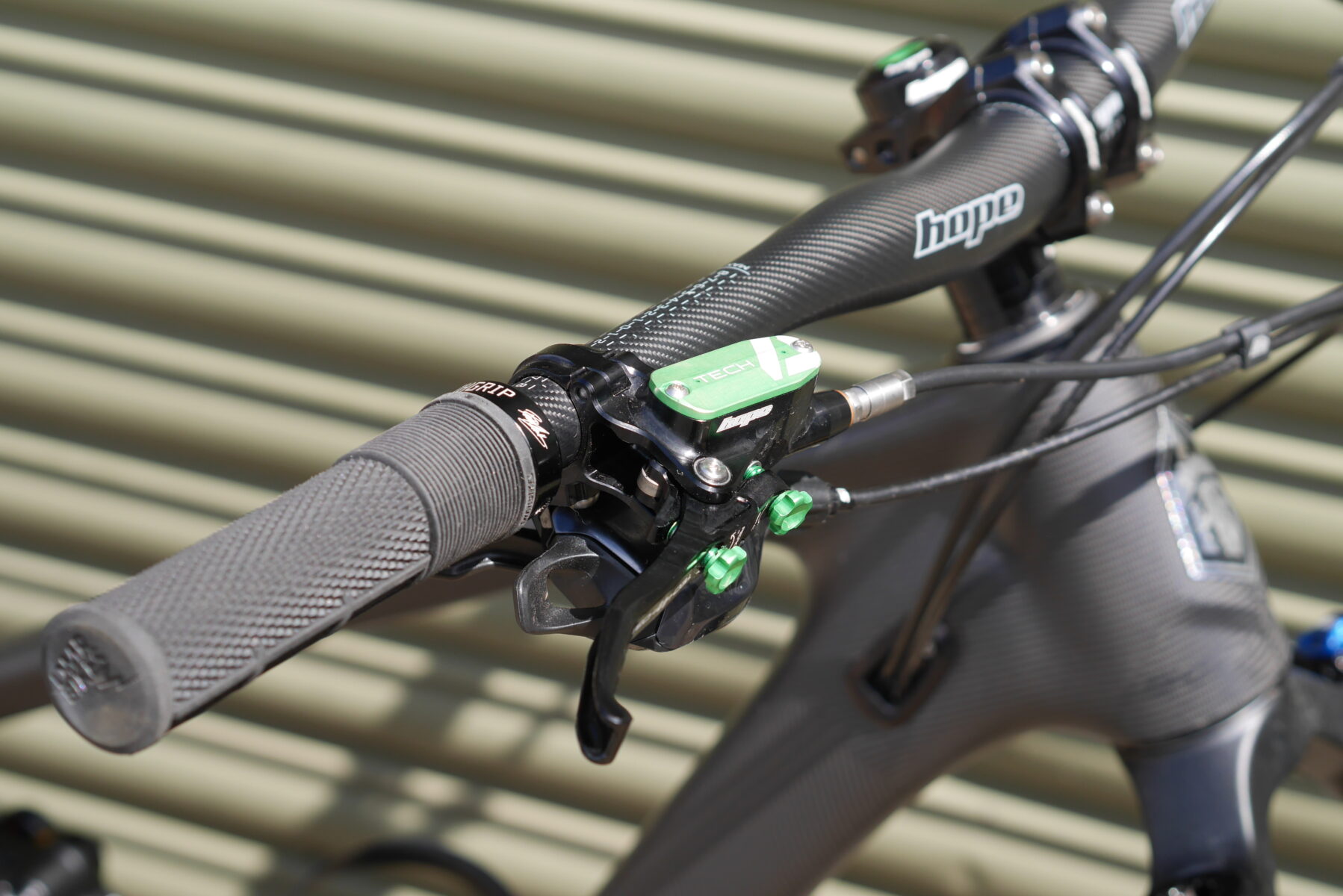
The whole bike is not carbon. CNC’d aluminium is used for the rocker linkage and also on the stays where the pivot hardware resides which allows Hope “to keep pivot bearings fitted into aluminium and spaced as wide as possible to increase bearing life”. Which is nice. Again, kudos to the Crayon Crew at Hope who somehow managed to merge the use of carbon and aluminium without the finished product looking disjointed or with the common ‘wish this was carbon too’ feeling to the aesthetic.
Other stuff: internal cable routing, bespoke rubber frame protection, ‘Butty Box’ downtube storage, water bottle bosses. The headtube also accepts an angle-adjust headset if you want to tweak the head angle a degree. Oh and there’s a neatly done flipchip in the seat stay if you want to run the bike as mullet/MX. Hope have also quietly ditched their proprietary 130mm back end. The HB.916 is regular Boost 148.
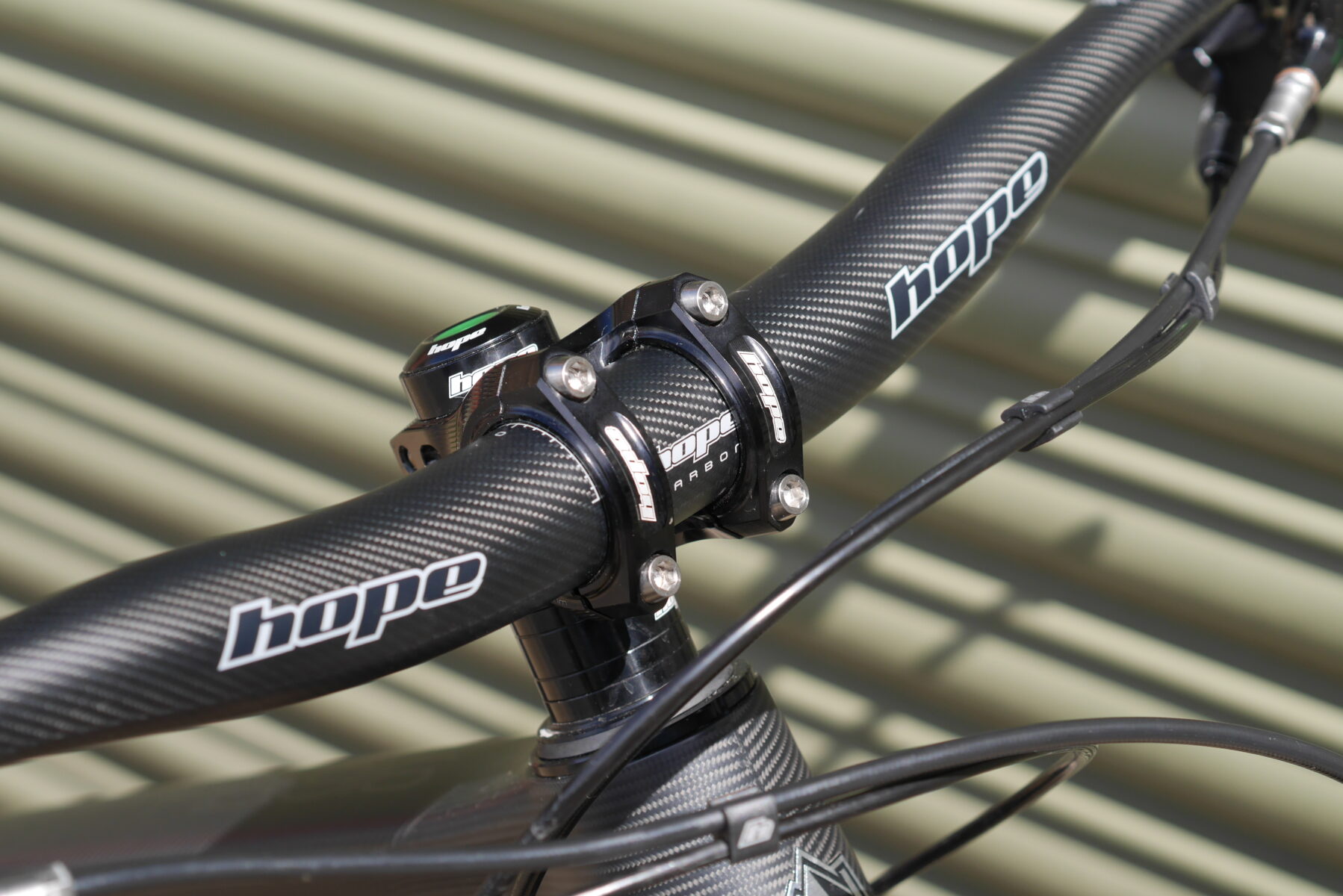
The high pivot idler
First of all, I’m fairly certain the overriding feature of the way this bike rides is the Öhlins parts. It’s always the dampers that have the biggest effect on how a bike rides, regardless of how many pivots it has and where they’re placed etc.
This is not to say the design of a bike’s back end is irrelevant. It does have an effect. It just may not be the most important part of the package. Or a part that can’t be overcome or improved/worsened by what you do with the dampers.
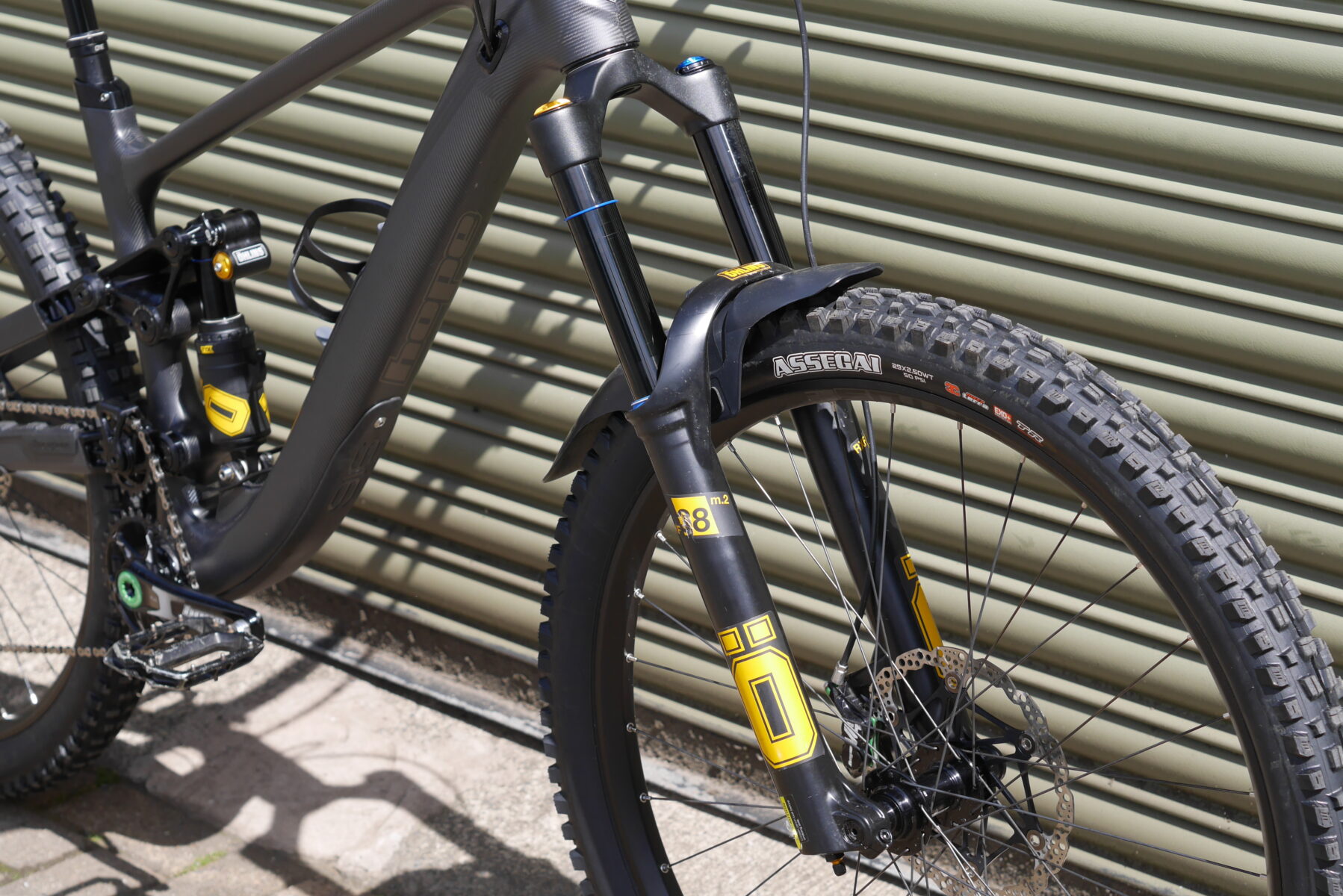
As you are possibly already aware of (and bored with hearing), a high pivot with idler design is meant to offer a rearward axle path without minimal effect on/from chain forces. Rearward axle paths are theoretically desirable as they take impacts in a betterer way that more vertical/forward axle paths. In essence, the rear wheel moves in similar plain to the fork; backwards and upwards. Like a backwards slash, if bike is viewed from the driveside … \
The idler is there to stop (or reduce) the effect of the chain pulling the cranks backwards under suspension compression.

The HB.916 is not the highest of high pivot designs. Its axle path is not *that* rearward and it stops being rearward completely in the latter half of the stroke. Nor is the leverage curve as progressive as other modern enduro bikes. It ‘only’ has around 26% progression. Which makes it fine for air or coil shocks (the latter can actually work just fine with designs that have much less progression).
One thing that’s easy to miss is that the bike is not a Horst Link (like the HB.160). It’s an axle-concentric layout. Think Dae Weagle’s Split Pivot or Trek’s ABP. What effect does this have? I’m going to say “not a lot” but if you forced me to come out with an opinion upon pain of death I’d say axle-concentric designs seems to bob a bit less. I can’t say I’ve ever felt any difference to braking or ‘anti-rise’ stuff. Sorry. Maybe it’s just me.
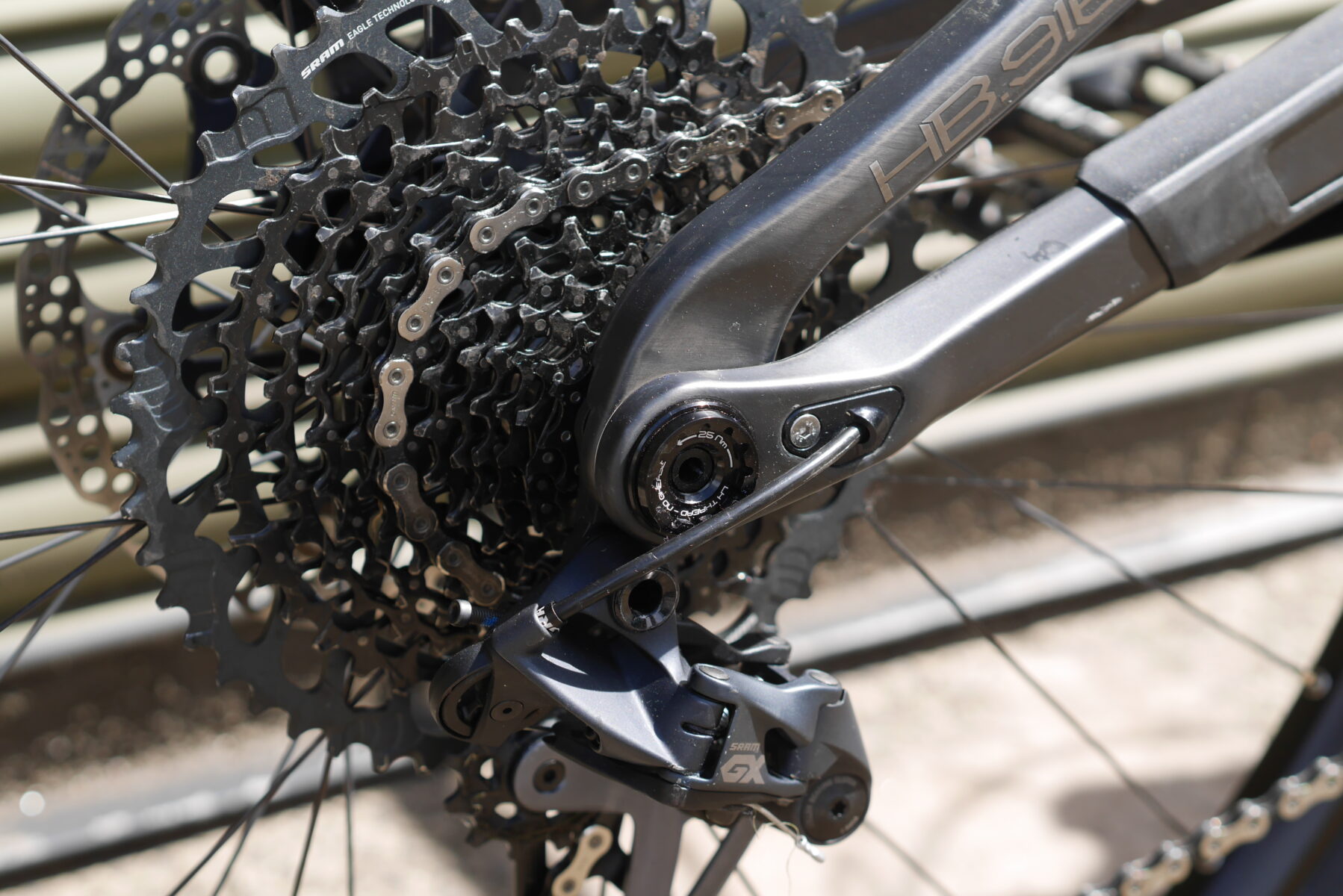
The more important stuff
Important stuff. By which I mean geometry, dampers and brakes.
Let’s deal with the last first. The brakes are Hope’s new Tech 4 levers paired with the V4 calliper, running on new-material pads. And they are completely brilliant. Very probably the best brakes ever made in fact. No really. It’s pretty annoying that we’ve just published our disc brake group test recently.
The dampers (journo speak for fork and rear shock) are both from Öhlins and I ended up running them completely open. It did take me a little while to get them to come to life, as it were. Basically, they felt really harsh (almost stiction-y but not) until I reached a very healthy amount of sag, circa 20% fork, 33% shock. I’m sure faster/better riders than me may like them run less sagged but I think it’s worth saying that a lot of mortals should experiment with running significantly softer pressures than they usually do on other brands’ dampers.
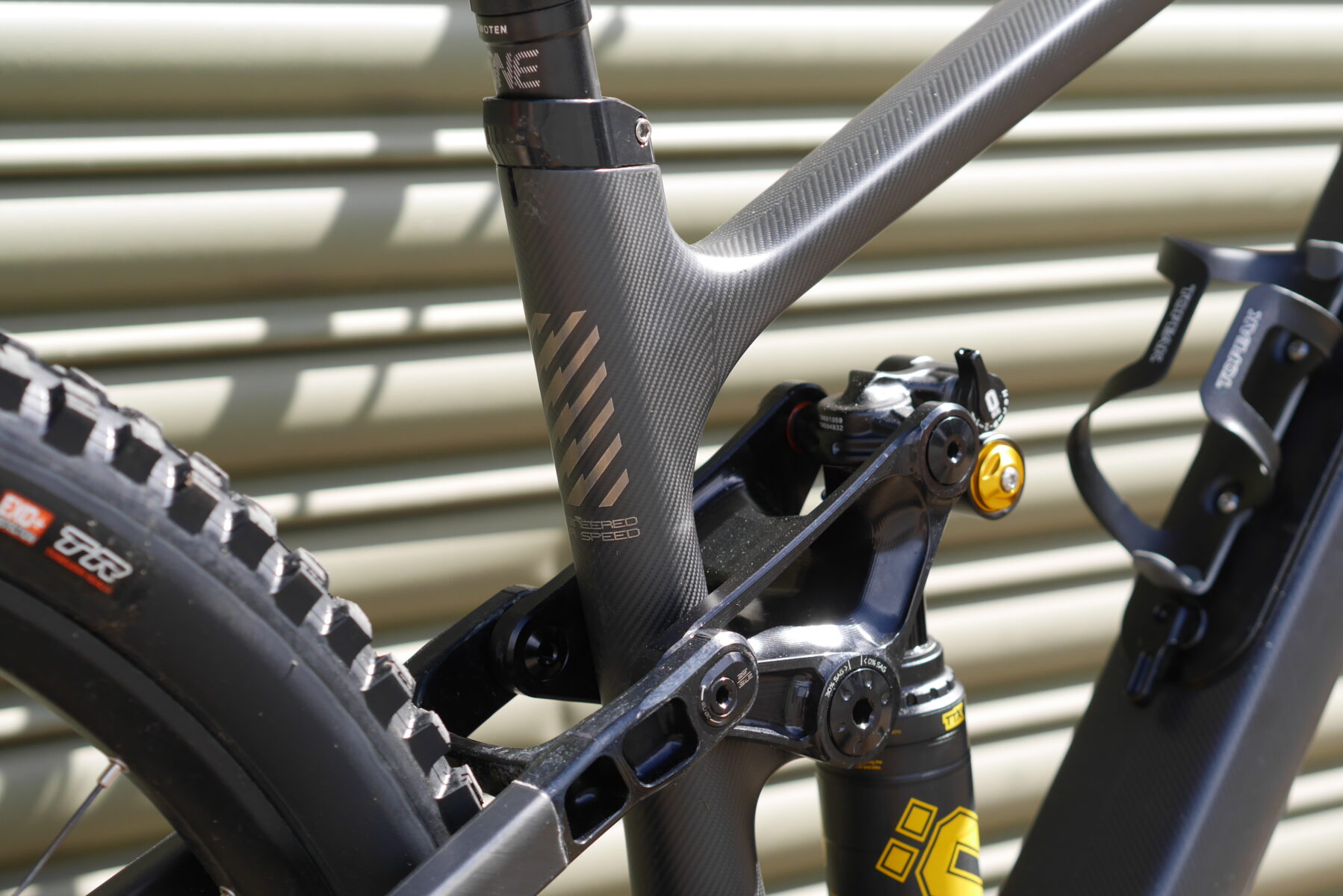
How did it ride?
Can you feel the idler? More specifically, can you feel the idler doing bad or good stuff? Well, I could tell when I’d forgotten to oil the chain. I don’t think the pulley drag is any worse than that from the rear mech, it’s more that the idler tinkling noise is easier to hear because of where it is in relation to yourself. Hey, treat it as a lubrication reminder! Once the chain was lubed, the idler never made its presence unduly felt.
The overriding quality of the ride of the Hope HB.916 was one of balance, comfort and responsiveness.
It was a real hovercraft at slower speeds and climbs. Just a really nice place to be. The steep seat angle and decent reach work really well when seated and making progress. The bike really took a lot of body tensing out the whole activity of going uphill.
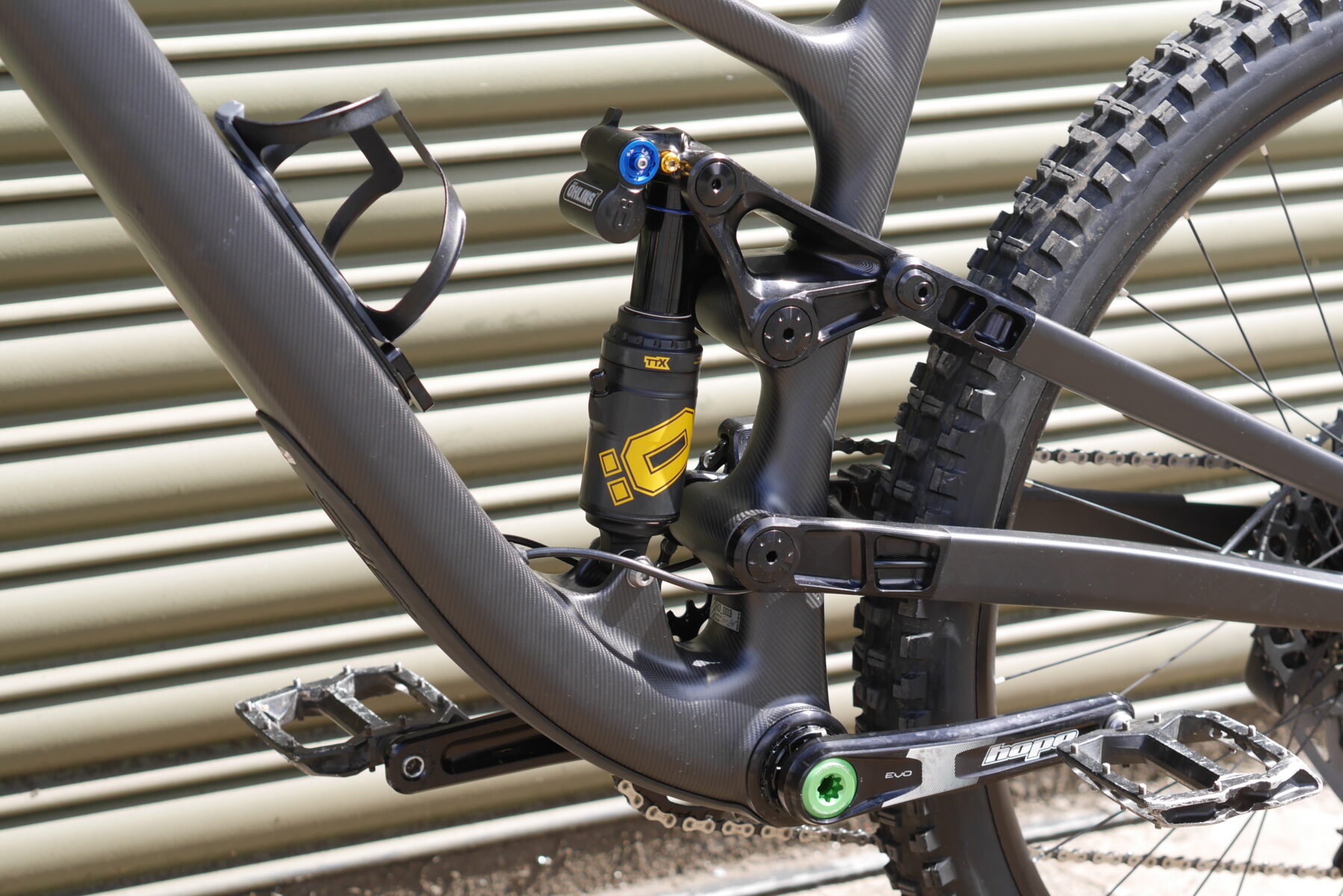
Whilst the bike, and indeed the wheelset, is not appreciably lighter than similar travel bikes that I’m used to riding of late, the HB.916 rode incredibly light. I realise this is a real pseud-y journo thing to come out with. Nevertheless, it is true. The bike just feels like it wastes fewer of your precious watts. And even when you’re freewheeling, the bike feels impressively sprightly and chuckable. It is very much not a plough.
How much of this sprightliness is due to the rear suspension design or the use of carbon fibre is up for debate. My 2p: it’s the Öhlins and the geometry.
I would definitely testify to the fact that the Hope HB.916 is a noticeably calm and quiet bike. That sort of stuff is unarguably a result of the rear suspension and the frame construction. Getting back on another bike after being on the HB.916 feels and sounds like you’re breaking bits of it as you descend down stuff.
The HB.916 does not feel like a delicate piece of engineering that needs servicing and rebuilding by a dedicated tinkerer every few weeks. It feels like a reassuring marvel of modern mountain biking that can totally rip any terrain you care to take it to.
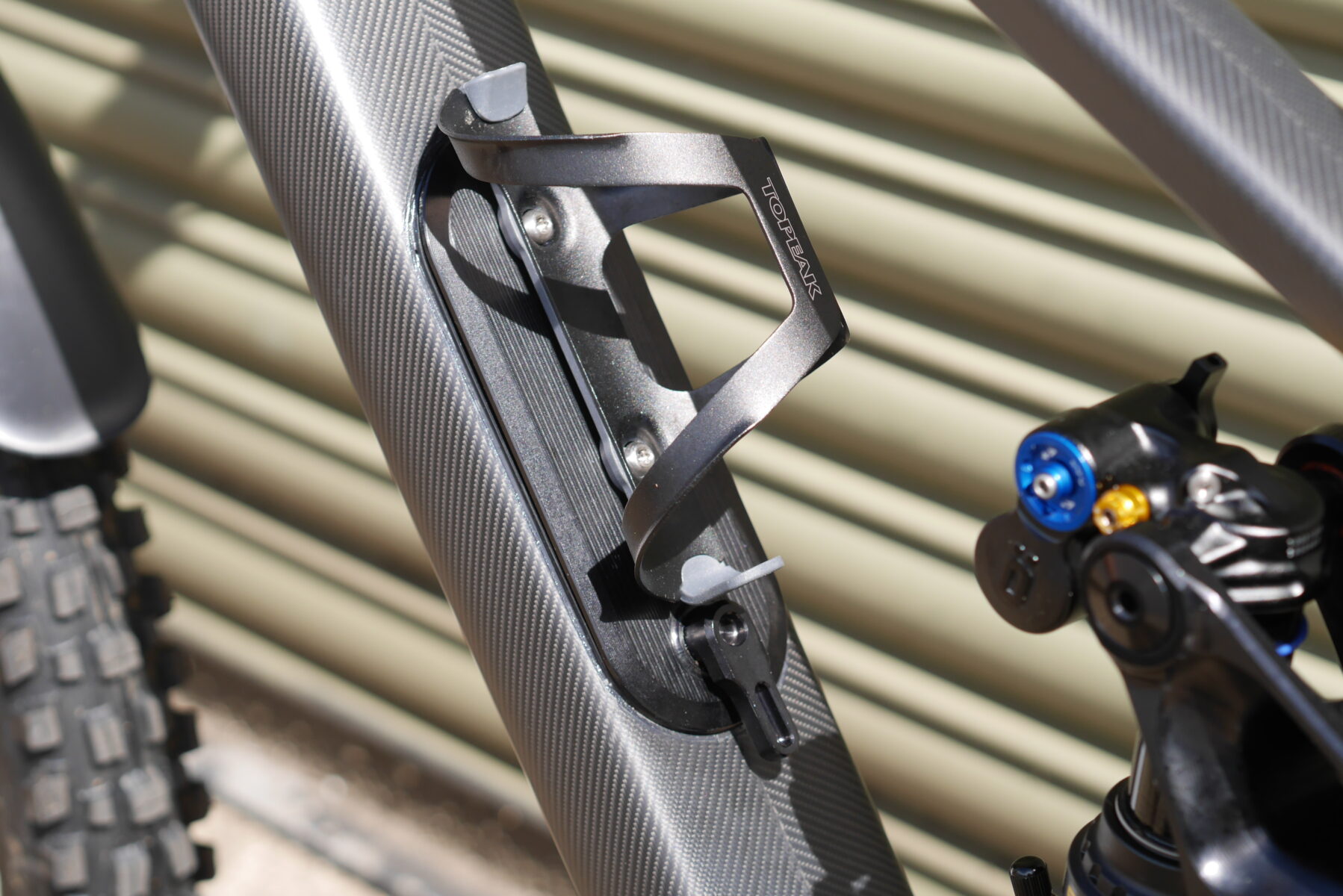
Overall first impressions
It makes climbs feel easier. It skips along singletrack. It can ride down anything you point it at.
We had to give our HB.916 test bike back for Hope to take to Tweedlove. I want it back now please. I NEED to find a chink in its weave-tastic armour. Otherwise, it may well be The Perfect Bike.
Specification
- Frame // Hope Tech Carbon, 160mm
- Shock // Ohlins TT Air TM
- Fork // Ohlins RFX38 Air, 170mm
- Wheels // Hope Fortus 30SC rims & Hope Pro 4 hubs
- Front Tyre // Maxxis Assegai 29×2.5in WT EXO+ TR
- Rear Tyre // Maxxis Minion DHR II 29×2.4in WT EXO+ TR
- Chainset // Hope
- Shifter // SRAM GX Eagle
- Rear Mech // SRAM GX Eagle
- Cassette // SRAM GX Eagle
- Brakes // Hope Tech 4 V4, 180/180mm rotors
- Stem // Hope Gravity 35mm
- Bars // Hope Carbon, 800mm, 35mm
- Grips // DMR Deathgrip
- Seatpost // OneUp Dropper Post V2 210mm
- BB // Hope
- Size Tested // H3
- Sizes Available // H1, H2, H3, H4
- Weight // 15.9kg
Geometry of our size H3 test bike
- Head angle // 64°
- Effective seat angle // 77.9°
- Seat tube length // 440mm
- Head tube length // 120mm
- Chainstay // 440mm
- Wheelbase // 1,286mm
- Effective top tube // 629mm
- BB height // 342mm
- Reach // 487mm
Join our mailing list to receive Singletrack editorial wisdom directly in your inbox.
Each newsletter is headed up by an exclusive editorial from our team and includes stories and news you don’t want to miss.
While you’re here…
Review Info
| Brand: | Hope |
| Product: | HB.916 |
| From: | Hope Tech |
| Price: | from £6,995 |
| Tested: | by Benji for 1 week |
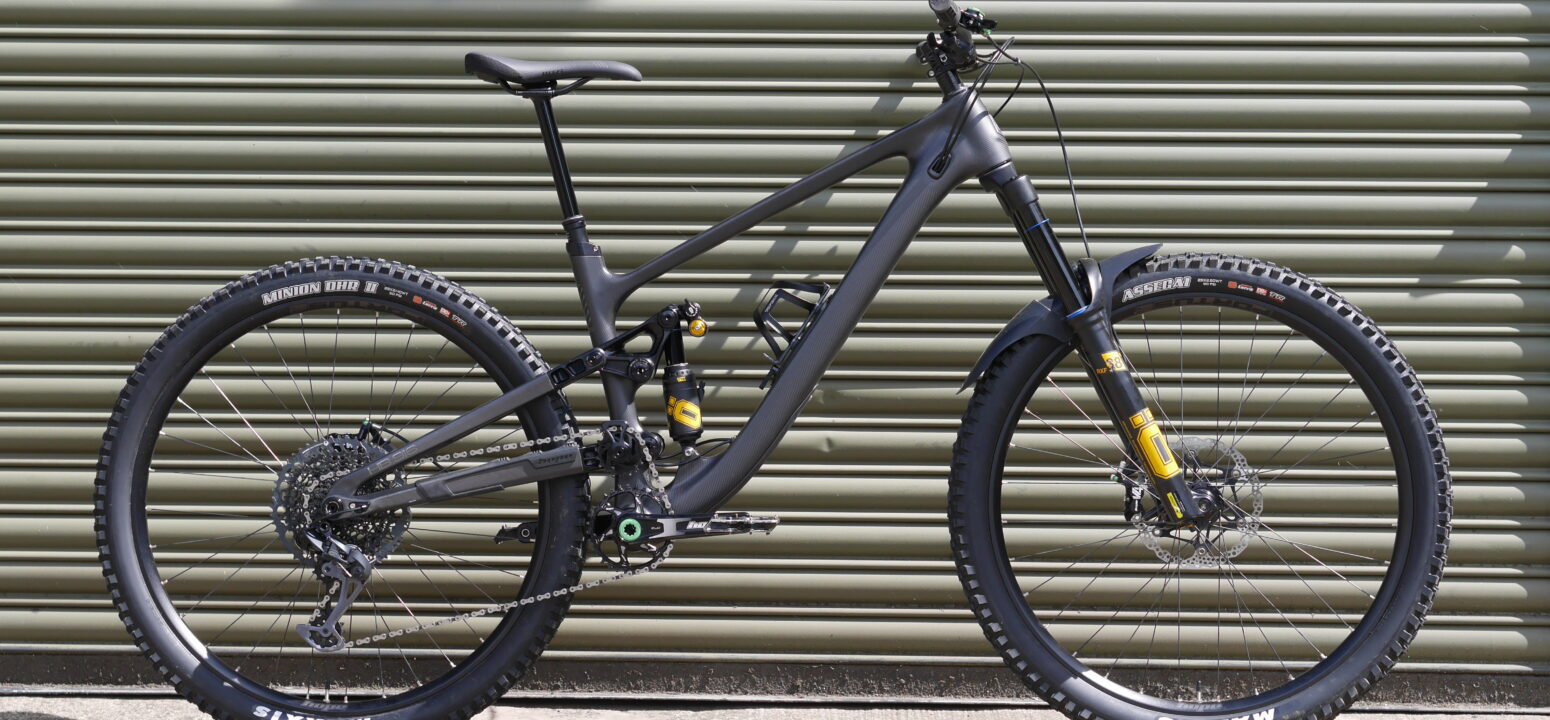

You must be logged in to reply to this topic.